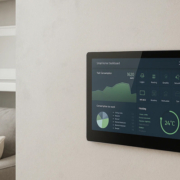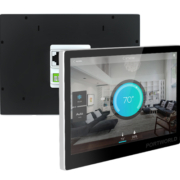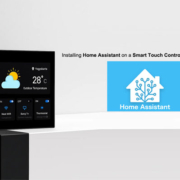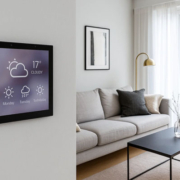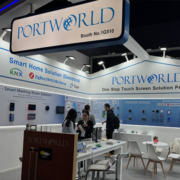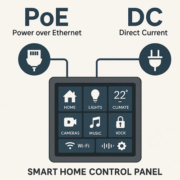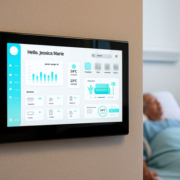Are Amazon Fire Tablets the Most Cost-Effective Option for Home Automation Control Panels?
In the growing world of smart homes, the need for centralized smart home control panels is more critical than ever. Whether you’re managing lighting, climate, security, or multimedia, having a reliable interface at various points in your home enhances convenience and automation. One question that comes up frequently is: Are Amazon Fire tablets the cheapest and most effective solution for home automation control panels?
Let’s dive deep into the cost, functionality, pros, cons, and compare them to dedicated smart home control panel options—like those offered by Portworld.
1. Why Amazon Fire Tablets Are a Popular Choice
- Low Cost: Often 3–5 times cheaper than dedicated smart panels.
- Smart Home App Compatibility: Fire OS supports popular apps like Alexa, SmartThings, and Home Assistant (via Fully Kiosk Browser).
- Wall Mount Options: With third-party frames and mounts, they can be easily converted into semi-permanent fixtures.
- Voice Assistant Support: Integrated Alexa allows voice control functionality.
For budget-conscious homeowners, this seems like a dream deal—but is it really the most effective solution?
2. Limitations of Using Fire Tablets as Smart home Control Panels
While cost is a significant factor, it’s not the only one. Fire tablets come with several trade-offs:
- Performance: Lower RAM and slower processors can lead to lag when loading home automation dashboards.
- No Native POE Support: Fire tablets require USB power, complicating clean wall installation.
- Limited OS Customization: Fire OS is more restrictive than Android or Linux-based systems.
- Durability: These are consumer-grade tablets, not industrial or commercial-grade devices built for 24/7 uptime.
- Security Risks: Rooting or modifying Fire OS to bypass limitations can expose the system to vulnerabilities.
3. Alternative: Professional Smart Control Panels by Portworld
While Amazon Fire tablets offer a budget solution, companies like Portworld provide dedicated smart home control panels with significant advantages in performance, longevity, and integration:
- Tailored Operating Systems: Android, Linux (Ubuntu/Debian), or Windows OS for deeper integration and better app compatibility.
- Multiple Display Sizes: Especially the 4-inch and 5-inch touch panels, perfect for multi-room deployment.
- POE (Power over Ethernet) Options: Cleaner and more stable wall-mount installation without visible cables.
- Enterprise-Grade Reliability: Designed for 24/7 uptime with industrial-grade components.
- Customization: Portworld supports custom UI, PCBA design, and firmware optimization.
- Broad Processor Support: Rockchip, Snapdragon, MTK, and Intel solutions provide options for different budgets and needs.
Portworld control panels are ideal for those seeking scalable, secure, and high-performance solutions for homes, offices, and commercial spaces.
4. Which One Is Right for You?
| Feature | Amazon Fire Tablet | Portworld Smart Control Panel |
|---|---|---|
| Price | ✅ Extremely Low | ❌ Higher Initial Cost |
| Performance | ❌ Basic | ✅ High |
| POE Support | ❌ No | ✅ Yes |
| Professional Appearance | ❌ Consumer Look | ✅ Sleek, Professional |
| OS Flexibility | ❌ Fire OS only | ✅ Android/Linux/Windows |
| Customization | ❌ Limited | ✅ Highly Customizable |
| Long-Term Reliability | ❌ Not Ideal | ✅ Industrial-Grade |
If you’re looking for a quick DIY solution, Fire tablets work fine. But if you want a reliable, scalable, and future-proof smart home setup, investing in professional systems like those from Portworld offers more value in the long run.
Amazon Fire tablets can be a cost-effective entry point for home automation control panels, but they come with notable compromises in functionality, reliability, and appearance. For those who want a professional, long-term smart home infrastructure—especially with features like POE, customizable operating systems, and sleek designs—Portworld’s smart control panels are a superior choice.

